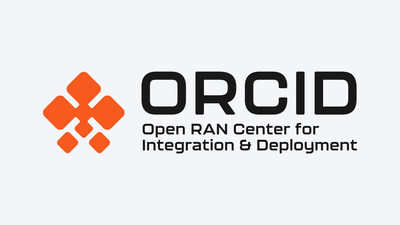EchoStar Launches Open RAN Center for Integration and Deployment (ORCID)
Rhea-AI Summary
EchoStar (Nasdaq: SATS) has launched the Open RAN Center for Integration and Deployment (ORCID), a state-of-the-art testing and evaluation lab for Open RAN (O-RAN) solutions. The facility, located at EchoStar's Cheyenne, Wyoming data center, is supported by a $50 million grant from the U.S. Department of Commerce's NTIA Public Wireless Supply Chain Innovation Fund.
ORCID offers vendors the opportunity to test and validate O-RAN solutions using EchoStar's live commercial-grade cloud-native Open RAN network. The center features a real field test setup, helping drive the O-RAN ecosystem from lab to commercial deployment. EchoStar manages the ORCID consortium, which includes partners like Fujitsu, Mavenir, and VMware by Broadcom.
Vendors interested in participating in ORCID can now submit applications through the ORCID web portal at orcid.us/.
Positive
- Received a $50 million grant from the NTIA Public Wireless Supply Chain Innovation Fund
- Launched ORCID, a state-of-the-art Open RAN testing and evaluation lab
- Offers vendors opportunity to test and validate O-RAN solutions on a live commercial-grade network
- Manages ORCID consortium with partners like Fujitsu, Mavenir, and VMware by Broadcom
- Built an O-RAN 5G network providing connectivity to over 240 million Americans
Negative
- None.
News Market Reaction 1 Alert
On the day this news was published, SATS gained 1.68%, reflecting a mild positive market reaction.
Data tracked by StockTitan Argus on the day of publication.
ORCID funded by
Vendors invited to apply for Open RAN commercial testing and evaluation opportunities
The facility, which is supported by a
"The Open RAN Center for Integration and Deployment (ORCID) is now open for business. We appreciate the trust and partnership of NTIA in this effort, which includes a historic
The launch of ORCID, which comes six months after NTIA Administrator Alan Davidson and Innovation Fund Director Amanda Toman announced the Innovation Fund grant at an EchoStar 5G site in
EchoStar manages the ORCID consortium, which includes Fujitsu, Mavenir, VMware by Broadcom, and a variety of other technology partners. EchoStar, with the help of its consortium partners, validated O-RAN technology at scale across the country, building an O-RAN 5G network that provides connectivity to more than 240 million Americans nationwide.
"We encourage vendors interested in advancing the future of Open RAN technology to reach out and see how to participate in ORCID," said Ravinder Jarral, VP of 5G Wireless Partner Engagement and Delivery and head of the ORCID program, EchoStar. "By partnering with ORCID, vendors can achieve substantial cost savings, faster time-to-market, improved quality of service, and rigorous validation for their O-RAN solutions."
Vendors interested in participating in ORCID may now submit applications using the ORCID web portal at orcid.us/.
For more information on ORCID, please visit ORCID.us.
About EchoStar
EchoStar Corporation (Nasdaq: SATS) is a premier provider of technology, networking services, television entertainment and connectivity, offering consumer, enterprise, operator, and government solutions worldwide under its EchoStar®, Boost Mobile®, Sling TV, DISH TV, Hughes®, HughesNet®, HughesON™, and JUPITER™ brands. In
©2024 EchoStar. Hughes, HughesNet, DISH, and Boost Mobile are registered trademarks of one or more affiliate companies of EchoStar Corp.
![]() View original content to download multimedia:https://www.prnewswire.com/news-releases/echostar-launches-open-ran-center-for-integration-and-deployment-orcid-302196947.html
View original content to download multimedia:https://www.prnewswire.com/news-releases/echostar-launches-open-ran-center-for-integration-and-deployment-orcid-302196947.html
SOURCE EchoStar Corporation









